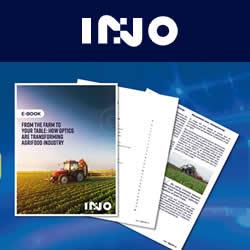ams OSRAM Extends Success in Horticulture Lighting With Hyper Red Innovation – Reinforces Market Leadership and Unrivaled Performance in Horticulture Lighting
Fifth generation of OSLON® Square Hyper Red LEDs achieves market leading wall plug efficiency of 78.8 % -Robust inhouse chip technology enabling exceptionally long Q90 lifetime of 102,000 hours -Designed to reduce grower´s energy consumption and cost without sacrificing crop yields
ams OSRAM (SIX: AMS), a global leader in optical solutions, has introduced the fifth generation of its popular OSLON® Square Hyper Red horticulture LED designed to offer faster plant growth and enable optimized system cost. The company continues to provide important innovation based on customer input by creating LED solutions that produce high photosynthetic photon flux (PPF) at higher efficacy than the previous generation of Hyper Red 660 nm LEDs. The new OSLON® Square Hyper Red LED is intended for use in all horticultural lighting applications including greenhouse toplighting and interlighting, sole source lighting, and vertical farming applications.
The new Hyper Red LED (part number GH CSSRM6.24), achieves wall plug efficiency of 78.8 % at a junction temperature of 25°C, compared with 76.8 % to the previous generation. It will enable indoor growers to cut energy cost for illuminating all types of crops grown under artificial lighting, including vegetables, flowers and medicinal plants. In addition, being a ceramic based package, the OSLON® Square family of LEDs has a strong and proven reputation as a robust and reliable high-power LED leading to high tolerances against humidity and other harsh conditions experienced in indoor farming. In longevity, the new GH CSSRM6.24 LED raises the standard, achieving an exceptionally long Q90 lifetime of 102,000 hours enabling stable harvesting results. The LED also withstands ESD strikes of up to 8 kV according to the ANSI/ESDA/JEDEC JS-001 standard (human body model).
Thomas Grebner, Marketing Manager at ams OSRAM, said: "ams OSRAM's innovation in red chip technology continues to raise the performance of horticulture LEDs, providing growers with higher efficiency in a standard LED package at the crucial Hyper Red 660 nm wavelength. Our technology provides growers a simple way to upgrade luminaire designs and to reduce their energy costs while maintaining high crop yields."
Important technology specifications include:
PPF is 5.96 µmol/s at 700 mA, and 3.02 µmol/s at 350 mA.
PPF efficacy is 4.32 µmol/J at 700 mA, and 4.62 µmol/J at 350 mA.
Peak wavelength is 660 nm, and the dominant wavelength is 640 nm.
Spectral bandwidth is 25 nm. 3.0 mm x 3.0 mm footprint for the ceramic package with silicone lens.
ams OSRAM holds a leading position in providing proven inhouse LED technology to the Horticulture industry. Our LED technology spans the Hyper Red 660 nm, Deep Blue 450 nm, Far Red 730 nm, Red 640 nm and Horti White areas of the spectrum offering complete solution possibilities for all indoor grower use case scenarios. In addition, we offer multiple sensor technologies that offers growers a complete solution for growing and monitoring the environment. The OSLON® Square GH CSSRM6.24 LED is available for standard ordering and sampling now. For sample requests or more technical information, please visit https://ams-osram.com/products/leds/color-leds/osram-oslon-square-gh-cssrm2-24.
More about ams OSRAM's Horticulture solutions: https://ams-osram.com/applications/lighting/agriculture-horticulture
Featured Product

